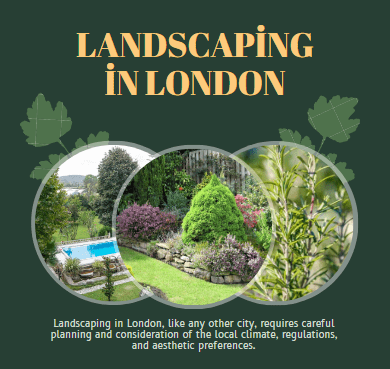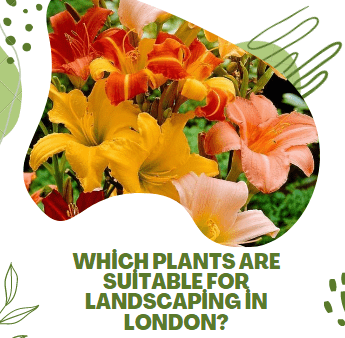How to Landscape in London?
In the most effective garden landscaping, a green area should be created in an area of approximately 60%. While creating this green area, natural grass or artificial grass can be preferred. When artificial grass is preferred, maintenance and irrigation costs incurred in the long process will be eliminated and will be more economical.
Landscaping in London, like any other city, requires careful planning and consideration of the local climate, regulations, and aesthetic preferences. Here are some steps and tips to help you landscape effectively in London:
- Research Local Regulations:
- Check with your local council or planning authority to understand any regulations or permits required for landscaping projects, especially if you plan to make significant changes to your property.
- Assess Your Space:
- Evaluate your outdoor space, taking note of its size, shape, and existing features. Consider how you want to use the space, whether it’s for gardening, outdoor dining, or simply creating a pleasant atmosphere.
- Set a Budget:
- Determine how much you are willing to spend on your landscaping project. This will help you prioritize your ideas and make informed decisions about materials and design.
- Plan Your Design:
- Create a landscaping plan that includes the placement of plants, trees, hardscape features (such as patios or walkways), and any other elements you want to include. Consider the following:
- Plant Selection: Choose plants that thrive in London’s climate and soil conditions. Native plants are often a good choice as they require less maintenance.
- Hardscape: Select materials for paths, patios, and other hardscape features that are durable and complement your design.
- Lighting: If you plan to use your outdoor space in the evenings, consider adding outdoor lighting for both safety and ambiance.
- Create a landscaping plan that includes the placement of plants, trees, hardscape features (such as patios or walkways), and any other elements you want to include. Consider the following:
- Sustainability:
- London’s climate can be unpredictable, so consider sustainable landscaping practices, such as rainwater harvesting and drought-tolerant plant choices, to minimize water usage.
- Maintenance:
- Keep in mind that regular maintenance will be necessary to keep your landscape looking its best. Plan for ongoing care, including weeding, pruning, and seasonal maintenance.
- Engage Professionals:
- Depending on the complexity of your project, you may need to hire professionals such as landscape architects, garden designers, or contractors to bring your vision to life. Make sure they have experience working in London and are familiar with local regulations.
- Timing:
- Consider the best time to start your landscaping project. Spring and early autumn are typically good seasons for planting, but you can work on hardscape elements like patios and paths year-round.
- Community and Neighbors:
- If you live in a communal setting or share your garden with neighbors, ensure that your landscaping plans are acceptable to everyone involved. It’s always a good idea to maintain good relations with your neighbors when making changes to your property.
- Enjoy Your Space:
- Once your landscaping project is complete, take the time to enjoy your outdoor space. London’s parks, gardens, and green spaces provide inspiration for creating a beautiful and functional landscape right at home.

Remember that London’s weather can be unpredictable, so be prepared for rainy days and the occasional heatwave when selecting plants and materials. With careful planning and consideration of local conditions, you can create a stunning and functional landscape in London.
Which plants are suitable for landscaping in London?
Landscaping in London requires plants that can thrive in the city’s specific climate, which features mild, maritime conditions with relatively mild winters and cool, wet summers. When selecting plants for your London landscape, consider the following options that are well-suited to the local climate:
- Evergreen Trees and Shrubs:
- Holly (Ilex aquifolium): Holly is a hardy evergreen shrub or tree with glossy, dark green leaves and red berries in winter.
- Yew (Taxus baccata): Yew is a versatile evergreen tree that can be shaped into hedges or topiaries.
- Boxwood (Buxus sempervirens): Boxwood is a classic choice for formal gardens, providing year-round greenery.
- Deciduous Trees and Shrubs:
- London Plane Tree (Platanus x acerifolia): A popular urban tree with distinctive bark and large leaves.
- Hornbeam (Carpinus betulus): A deciduous tree often used for hedging due to its dense growth habit.
- Japanese Maple (Acer palmatum): These small trees or shrubs provide beautiful foliage and vibrant fall colors.
- Perennials and Annuals:
- Lavender (Lavandula spp.): Fragrant lavender plants are well-suited to London’s climate and add a touch of elegance to gardens.
- Geranium (Geranium spp.): Hardy geraniums are easy to grow and come in various colors.
- Roses (Rosa spp.): Many rose varieties are suitable for London gardens, providing beautiful blooms throughout the growing season.
- Bulbs and Spring Flowers:
- Daffodils (Narcissus spp.): These early spring bloomers add cheerful yellow or white flowers to gardens.
- Tulips (Tulipa spp.): Tulips come in various colors and shapes, brightening up gardens in the spring.
- Snowdrops (Galanthus nivalis): Delicate snowdrops are among the first flowers to appear in late winter.
- Ground Covers:
- Lily of the Valley (Convallaria majalis): This fragrant ground cover is ideal for shady areas.
- Alpine Plants (e.g., Saxifraga spp.): These low-growing plants are well-suited for rock gardens or as ground covers in well-draining soil.
- Climbing Plants:
- Clematis (Clematis spp.): These vines produce stunning, colorful flowers and are perfect for trellises or fences.
- Wisteria (Wisteria spp.): Known for its cascading purple or white flowers, wisteria can create a dramatic effect when trained on walls or pergolas.
- Native Plants:
- Consider incorporating native plants and wildflowers into your landscape, as they are well-adapted to the local environment and support local wildlife.
- Ferns:
- Ferns, such as the native hart’s tongue fern (Asplenium scolopendrium), thrive in shaded, damp areas and can add lush greenery to your garden.
- Herbs and Edible Plants:
- Grow herbs like rosemary, thyme, and mint, as well as edible plants like strawberries or blueberries, in your garden for both beauty and utility.

Always take into account your specific garden conditions, including soil type, sun exposure, and moisture levels, when choosing plants for landscaping in London. Additionally, regular maintenance, including watering, pruning, and mulching, will help your plants thrive in the local climate.
Landscaping in London; Arranging space for landscaping can vary depending on personal preferences and needs. Professional landscape designers can help you with this process and help you achieve a more professional result. Landscaping application in London >>
What season is landscaping in London?
Landscaping in London can be done throughout the year, but the choice of season depends on the type of work you plan to undertake and your specific landscaping goals. Here’s a breakdown of landscaping tasks and the seasons best suited for them in London:
- Spring (March to May):
- Spring is an ideal time for planting many types of trees, shrubs, and perennials, as the soil is starting to warm up.
- You can also focus on spring-blooming bulbs like daffodils and tulips for vibrant colors.
- Lawn maintenance, including aeration and overseeding, can be done in early spring to promote healthy grass growth.
- Summer (June to August):
- Summer is great for enjoying your established landscape and garden, but it can be hot and dry, so proper watering is essential.
- Continue regular maintenance tasks such as weeding, pruning, and mowing.
- Autumn (September to November):
- Early autumn is a fantastic time for planting, as the soil is still warm, and there’s generally more rainfall.
- It’s an excellent time for installing new perennials, trees, and shrubs.
- Consider adding fall-blooming plants and trees to extend the color in your garden.
- You can also undertake hardscaping projects like building patios or walkways.
- Winter (December to February):
- While the cold and wet winters of London are not ideal for planting, you can focus on planning and designing your landscaping projects during this time.
- Use the winter months to research and select plants, draw up plans, and prepare for spring installations.
- If you have established plants, protect them from harsh winter weather by mulching and wrapping.
Keep in mind that London’s weather can be unpredictable, so it’s essential to check the local climate conditions and forecasts for the specific year when planning your landscaping tasks. Additionally, some tasks, like lawn maintenance and weeding, may need attention year-round to keep your landscape looking its best. Landscaping company in London >>





